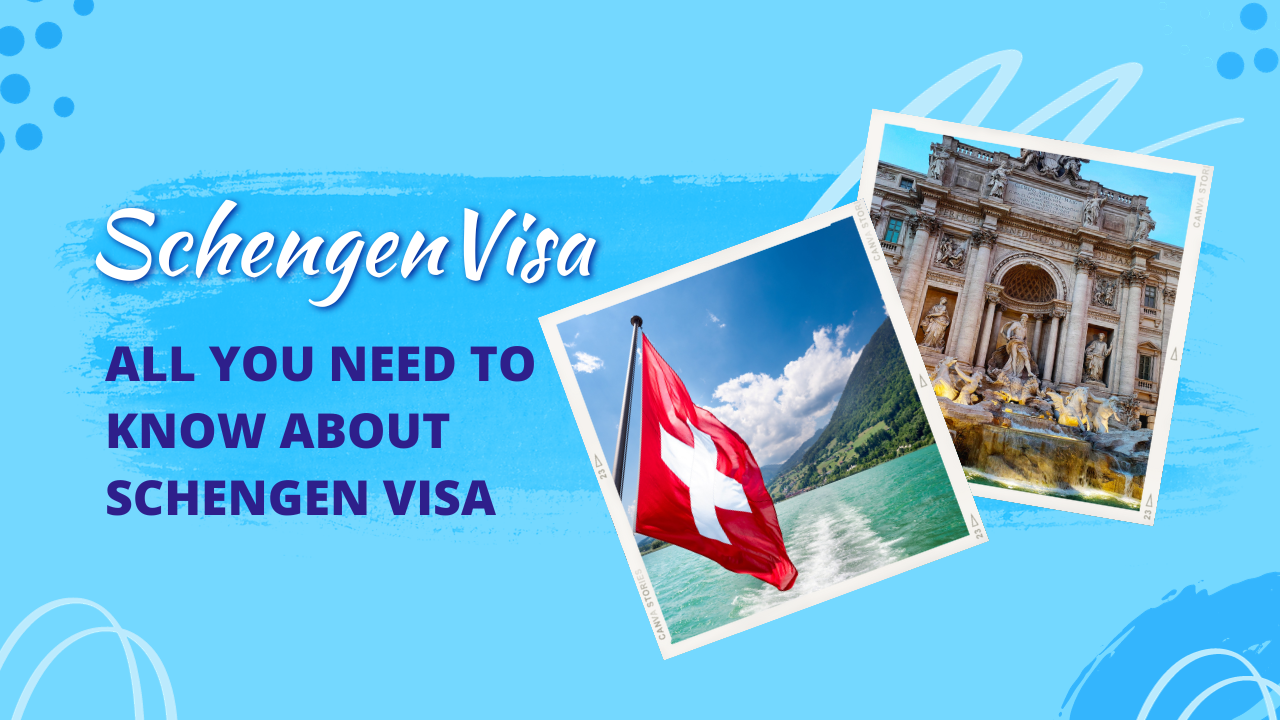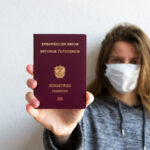Schengen refers to the EU passport-free zone that covers most European countries, creating the largest free travel area globally. The Schengen Visa—a term that echoes through the minds of travelers seeking to explore the diverse and captivating landscapes of Europe. Whether you dream of strolling along the historic streets of Rome, skiing in the Alpine wonderland of Switzerland, or savoring pastries in the charming cafes of Paris, the Schengen Visa is your key to unlock the treasures of the Old Continent.
What is a Schengen Visa?
A Schengen visa is a short-stay visa that allows individuals to travel to any member of the Schengen Area for up to 90 days, whether for tourism or business. This visa is the most common choice for those heading to Europe, providing entry, free travel, and exit within the Schengen zone, free from border controls. In 2022, over 5.9 million people utilized their Schengen visas to travel to Europe.
Note: If you intend to study, work, or reside in a Schengen country for more than 90 days, you must apply for a national visa from the specific European country and not a Schengen Visa.
Who Needs a Schengen Visa to Enter Europe?
Nationals of third countries without visa liberalization agreements with Schengen member states must need to get a visa before landing in Europe. To determine whether you need a Schengen Visa for traveling to Schengen member countries, take a look at the list of countries whose citizens must apply for a Schengen Visa before traveling to the EU.
Travel Documents and Entry Requirements for non-EU Nationals to Apply for Schengen Visa
Non-EU/Schengen nationals must provide several documents upon entry, regardless of their visa-exempt status. These documents include:
- Valid Passport: Issued within the last 10 years, valid for at least three months beyond the intended departure date from the EU.
- Schengen Visa: Mandatory for nationals of third countries requiring a visa.
- Additional information/documents may be requested at the EU/Schengen border, including proof of sufficient funds, accommodation details, return flight tickets, purpose of travel, travel insurance, and an invitation letter.
Ensure that the border officer grants you an entry stamp in your passport when you enter the Schengen area; without it, you may be subject to fines or detention.
Which European Countries Issue Schengen Visa?
The Schengen Zone includes 27 countries that signed the Schengen Agreement, enabling citizens of member countries to travel freely within the zone without passport and border control. Each Schengen zone member country can issue Schengen visas.
Schengen Countries
- Switzerland
- Estonia
- Slovenia
- Austria
- Slovakia
- Belgium
- Sweden
- Czech Republic
- Finland
- Croatia
- Denmark
- France
- Italy
- Poland
- Liechtenstein
- Hungary
- Germany
- Lithuania
- Luxembourg
- Greece
- Latvia
- Iceland
- Norway
- Spain
- Malta
- Netherlands
- Portugal
Additionally, 18 other countries, not part of the Schengen Zone, permit foreign citizens from non-Schengen countries to enter and stay temporarily in their territories by showing a valid multiple-entry Schengen Visa. No national visa is needed to enter, transit, or temporarily stay in these countries.
Schengen Visa Types
You must apply for a Schengen Visa if you plan to visit one or more Schengen countries for various purposes, that’s why Schengen visa types are here to accommodate including:
- Schengen Tourist Visa
- Schengen Student Visa
- Schengen Medical Visa
- Schengen Official Visit Visa
- Schengen Business Visa
- Schengen Visitor Visa
- Schengen Transit Visa
Depending on your reason for visiting and the frequency of your trips, the Schengen consulate can issue a single-entry, double-entry, or multiple-entry visa. The validity of your single-entry visa depends on the days you specify in your visa application form and the decision of the issuing consulate.
How Long Does the Schengen Visa Allow Me to Stay in Europe?
The duration of your stay depends on the type of visa issued and the nature of your travel. Generally, the most common visa allows a maximum stay of 90 days within a six-month period starting from your date of entry. Frequent travelers may apply for an EU visa valid for up to 5 years, but remember that you cannot stay in the Schengen Area for more than 90 days within a 180-day period, even with a multiple-entry visa.
How to Apply for Schengen Visa to Enter Europe?
To apply for a Schengen Visa, you must first determine if you need one based on the purpose of your travel and nationality. If required, prepare your travel plans, including the countries you’ll visit, entry and exit points, and duration of your stay. Review the European visa application requirements and initiate the process of scheduling a visa appointment at a Schengen consulate in your country. Here are the general steps to obtain a 5-year Schengen visa:
-
Meet the Schengen Visa Requirements: Ensure that you meet the general Schengen visa requirements, which include having a valid reason for your visit, having travel insurance, and demonstrating your ability to support yourself during your stay.
-
Apply for a Short-Stay Visa: Initially, you will need to apply for a short-stay Schengen visa. This could be a single-entry or multiple-entry visa with a shorter validity period.
-
Travel Within the Schengen Area: Once you have obtained your initial short-stay visa, you should use it to travel within the Schengen Area. Make sure to follow the rules and conditions of your visa, such as the maximum length of stay in the Schengen Area.
-
Comply with Visa Rules: During the period when your short-stay visa is valid, it’s crucial to strictly adhere to the visa rules. Overstaying your visa or not complying with the terms and conditions could affect your chances of getting a long-term visa.
-
Apply for a Long-Term Visa: After you have used your initial short-stay Schengen visa, you can apply for a long-term visa. The specific requirements and procedures may vary depending on the Schengen country you are applying to. In many cases, you would need to have used the short-stay visa without any violations.
-
Provide Supporting Documents: Submit the required documents, including proof of your travel history within the Schengen Area, evidence of your ties to your home country, and any other documents requested by the consulate.
-
Attend an Interview: Some Schengen countries may require applicants to attend an interview as part of the application process. Prepare for the interview by knowing the purpose of your visit, your travel history, and other relevant details.
-
Pay the Visa Fee: Pay the visa fee as required by the Schengen country’s consulate. The fee may vary depending on the country and type of visa.
-
Wait for Processing: Wait for the processing of your visa application. The processing time can vary but generally takes several weeks.
-
Receive Your Schengen Visa: If your application is approved, you will receive a 5-year multiple-entry Schengen visa that allows you to visit the Schengen Area for short stays during its validity.
What is Schengen visa type D and C?
-
Schengen Visa Type C:
- Also known as a “Short-Stay Visa” or “C-Visa.”
- Intended for short-term visits to the Schengen Area.
- Typically issued for tourism, business trips, family visits, or other short visits.
- There are two subcategories:
- Schengen Visa Type C-1: This is a single-entry visa, allowing you to enter the Schengen Area only once.
- Schengen Visa Type C-Multiple Entry: This is a multiple-entry visa, allowing you to enter and exit the Schengen Area multiple times during its validity.
- The maximum duration of stay with a Schengen Type C visa is usually 90 days within a 180-day period. This means that you can spend up to 90 days in total within the Schengen Area within any 180-day period.
-
Schengen Visa Type D:
- Also known as a “National Visa” or “Long-Stay Visa.”
- Intended for long-term stays in a specific Schengen country.
- Issued for purposes such as employment, study, family reunification, or residency.
- Schengen Visa Type D is typically issued by an individual Schengen country, and it allows you to stay in that specific country for an extended period.
- The duration and conditions of Schengen Type D visas vary depending on the specific country’s national regulations. They can range from several months to several years.
It’s important to note that Schengen Type C visas are granted by a Schengen country for visits that are short in duration and within the 90-day limit. Schengen Type D visas, on the other hand, are national visas issued by a specific Schengen country and are intended for longer-term stays in that country.
If you plan to visit multiple Schengen countries for short stays, you should apply for a Schengen Visa Type C, which allows you to travel within the entire Schengen Area. If your intention is to reside, work, or study in a specific Schengen country, you will need to apply for a Schengen Visa Type D specific to that country.
For How Long is Schengen Visa Valid?
The Schengen visa is typically valid for short stays, and the maximum duration of validity is determined by the type of visa issued. Here are the general guidelines for the validity of Schengen visas:
-
Single-Entry Schengen Visa (Type C-1):
- This visa allows you to enter the Schengen Area once.
- It is typically valid for the specific dates of your intended travel.
-
Multiple-Entry Schengen Visa (Type C-Multiple Entry):
- This visa allows you to enter and exit the Schengen Area multiple times during its validity.
- The maximum validity for multiple-entry visas is usually 5 years or as determined by the issuing country.
-
Schengen Visa Type D (National Visa):
- The validity of Schengen Visa Type D varies based on the specific regulations of the issuing Schengen country.
- It is intended for longer-term stays, such as for employment, study, family reunification, or residency.
Remember that the duration of stay within the Schengen Area is also subject to a “90/180 rule.” This rule means that within any 180-day period, you are allowed to stay in the Schengen Area for a maximum of 90 days. Your visa, whether single-entry or multiple-entry, must comply with this rule.
For example, with a multiple-entry visa, you can enter the Schengen Area as many times as you wish during its validity. However, the total duration of your stays within a rolling 180-day period must not exceed 90 days. Always check the visa sticker and the visa validity dates to ensure you are in compliance with the 90/180 rule. If you overstay or exceed the allowed duration, you may face immigration penalties or difficulties in the future when applying for Schengen visas.
What Are the New Schengen Rules for 2023?
In 2023, new Schengen rules will require U.S. citizens and nationals of over 60 other countries to obtain an electronic travel authorization to visit most of Europe. Travelers heading to any Schengen-zone country must complete registration with the European Travel Information and Authorization System (ETIAS).
How Much Does a European Visa Cost?
The Schengen visa fee costs €80 per adult, with varying rates for applicants of different ages, nationalities, and other factors.
What is a Flight Itinerary for an EU Visa Application?
A flight itinerary is a confirmed document outlining the flight’s schedule that can be verified online.
What is Travel Insurance for a Schengen Visa?
Your travel medical insurance must be valid for the entire Schengen Area stay, with a minimum coverage of 30,000 EUR for medical emergencies.
Does Everybody Need Travel Insurance?
Anyone traveling temporarily to the Schengen Area from a country with visa requirements must be insured for their stay.
Where Do I Get Travel Insurance?
Travelers can buy an individual travel visa insurance policy online or through a recognized insurance/travel agency. Purchase depends on the chosen company, and it should cover the duration of your stay in the Schengen area. For a successful visit to Europe, understanding Schengen visa information is crucial. Prepare all necessary documents and follow the application process carefully to ensure a smooth journey.
Can I Go to VFS Without Appointment for Schengen Visa?
For Schengen visa applications, you may be able to use the “Walk-in Without Appointment” service in specific cases, such as urgent travel needs or missed appointments. This service is available in select countries and allows you to submit your visa application without a pre-booked appointment on a day you choose. However, it’s important to check with the specific VFS Global center in your location or the Schengen consulate where you’re applying for the most accurate and up-to-date information regarding this service, as the availability and conditions may vary.
Which Country is New to Join Schengen?
Croatia is the most recent country to join the Schengen area. Additionally, non-EU states such as Iceland, Norway, Switzerland, and Liechtenstein have also joined the Schengen Area.
Which Schengen Country Has Highest Visa Approval Rate?
Lithuania has the highest Schengen visa approval rate, with an approval rate of 98.7%. While it may not be as popular a tourist destination as some other Schengen countries, this high approval rate can lead to shorter waiting times for your visa application status.
Conclusion
The Schengen Visa is a key that unlocks the treasures of Europe, allowing travelers to explore the diverse and captivating landscapes of the Old Continent. It is a short-stay visa that permits individuals to travel to any member of the Schengen Area for up to 90 days, whether for tourism or business, free from border controls. As of 2022, over 5.9 million people utilized their Schengen visas to travel to Europe. By following the correct procedures and preparing all necessary documents, travelers can ensure a smooth and memorable visit to the continent.





















